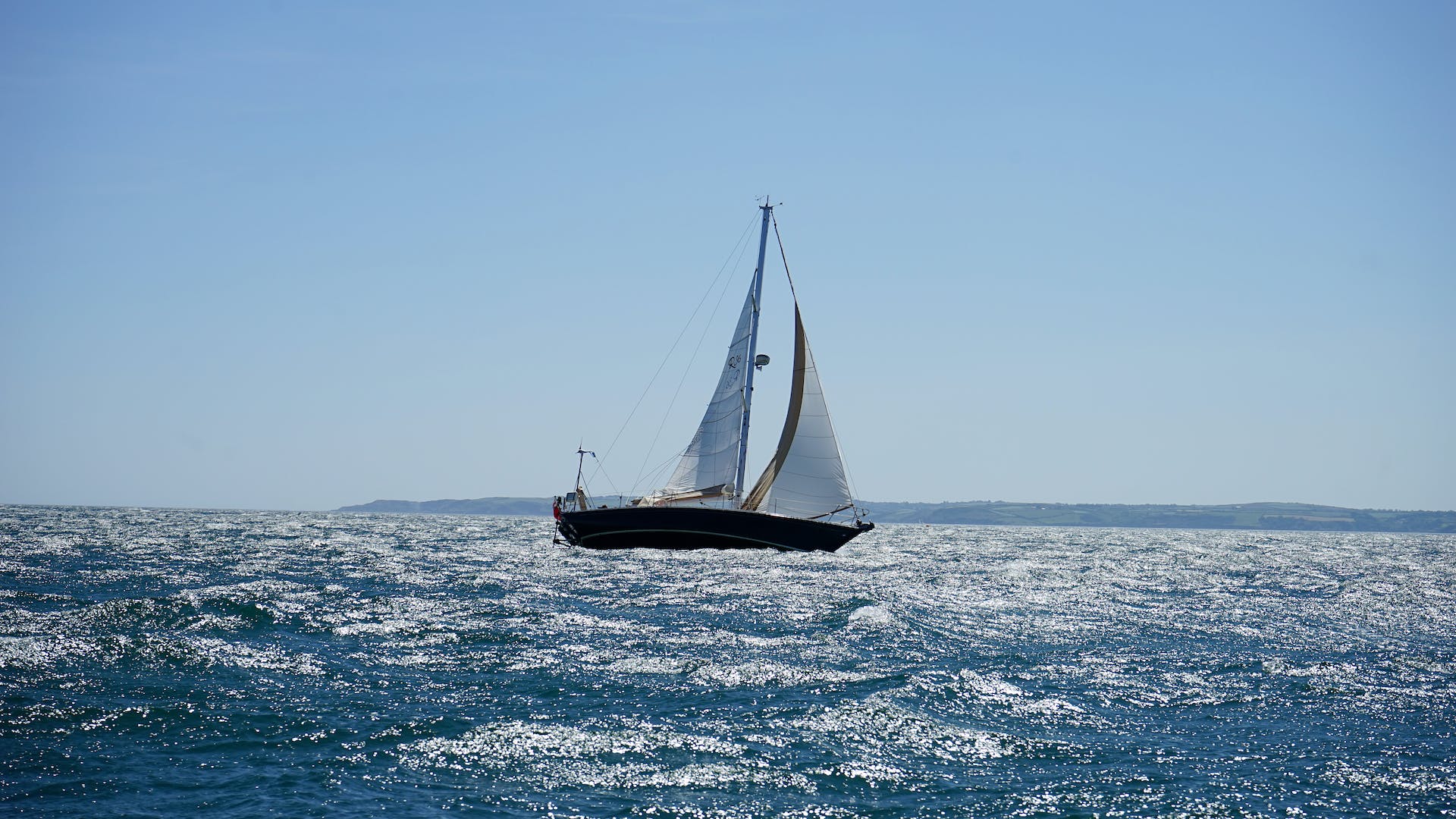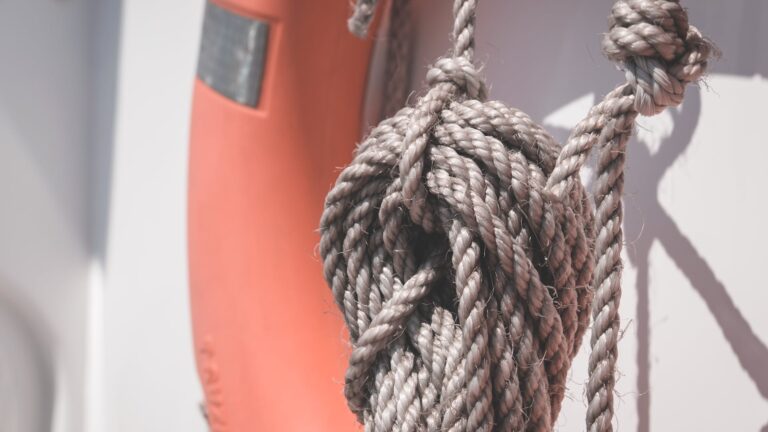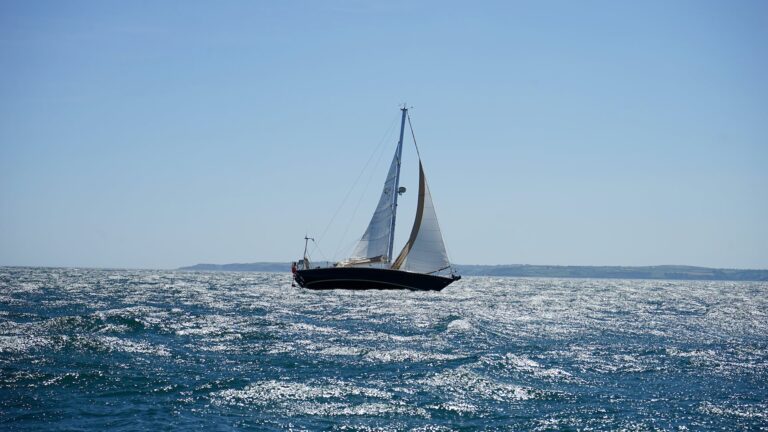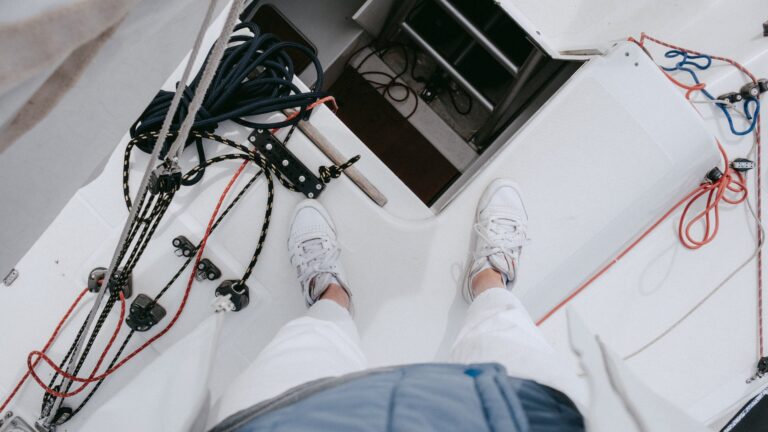What happens when a sail is reefed?
- Introduction
- What is Reefing?
- Why Reef a Sail?
- Types of Reefing
- Points of Sail
- Steps to Reef a Sail
- Benefits of Reefing
- Disadvantages of Reefing
- Factors that Affect the Performance of a Reefed Sail
- Conclusion
- References
What Happens When You Reef a Sail?
Reefing is an essential sailing technique that allows sailors to adjust the sail area for different conditions and to reduce power in high winds or heavy seas. This article will discuss what happens when you reef a sail, the types of reefing, points of sail, steps for reefing, advantages and disadvantages, and factors that affect the performance of a reefed sail.
## What is Reefing?
Reefing is the process of reducing the area of a sail by rolling or folding one edge of the canvas in on itself and then tying it securely to a spar or stay in order to preserve the stability and performance of the sailing vessel in high winds or heavy seas. This process is also known as ‘shaking out’ because when full sail area is restored, it is referred to as ‘shaking out’ a reef line (or lines).
## Why Reef A Sail?
Reefing can be used to: reduce power in strong winds; control heel angle; adjust sail area to suit changing conditions; help maintain balance and stability; reduce tacking angle; reduce weather helm; help avoid capsizing; provide more control over boat speed; reduce stress on the rigging, sails, and hull structure; and aid in maneuverability in crowded anchorages or busy waterways.
## Types Of Reefing
There are four main types of reefing: slab reefing, single line reefing, double line reefing, and lazy jacks/stacks/bags/booms/locks/toggles reef systems. Slab reefing involves folding or rolling one edge of the sail into itself with ties attached to each side that are then tensioned with winches to hold them in place – thus reducing sail area significantly without having to tie off any lines or make any adjustments while sailing (except for adjusting tension). Single line reef systems involve tying off one line at each point along the luff (front) edge of the sail when it needs to be reduced – this creates an even reduction along the entire luff while maintaining good shape in the leech (back) edge which helps maintain balance and stability while sailing, as well as allowing for easy adjustment if necessary (e.g., if wind changes suddenly). Double line systems use two lines tied off at varying points along both edges – this provides more control over shape but requires more time and effort for setup/adjustment as well as adding extra loads on both sides which can affect balance/stability negatively if not set correctly. Lazy jacks/stacks/bags/booms/locks/toggles are all variations on single or double line systems with additional equipment such as poles, booms, bags etc., usually designed primarily for ease-of-use rather than performance (though they can be adjusted for better performance).
## Points Of Sail
The type of reef chosen will depend on many factors including: point-of-sail (i.e., upwind vs downwind); wind strength; sea state; type and size of boat; available crew strength; personal preference etc., but generally speaking slab reefs are best for upwind sailing while single or double lines are better suited for downwind sailing due to their ability to be adjusted easily if needed without having to tie off any lines etc.. For downwind sailing it’s also important to consider other factors such as whether you need “lazy sails” (i.e., sails that will stay set without having crew constantly adjusting them) or “active sails” (i.e., sails that need constant adjustment) depending on how much crew you have available etc..
## Steps To Reef A Sail
The steps required for setting up reefs will vary depending on which type you choose but generally speaking they involve: first reducing mainsail area by either rolling or folding one edge into itself so it lies parallel with its opposite edge (this can be done manually with ties attached at each end); then tension both sides with winches until desired shape is achieved – ensure you have slack left so you can adjust tension if needed later on); finally attach any additional equipment such as lazy jacks/stacks etc.. If using single or double line systems then these should also be tied off at appropriate points along each edge before tension is applied – note that these should always be tied off first before tension is applied otherwise they may not hold correctly when tensioned.. For lazy jacks etc., these should also be attached now so they are ready when needed later on during sailing maneuvers etc..
## Benefits Of Reefing
The main benefits of using reefs include: reducing power in strong winds; controlling heel angle; adjusting sail area according to changing conditions; maintaining balance and stability while sailing; reducing tacking angle; providing more control over boat speed; reducing stress on rigging, sails, and hull structure; aiding maneuverability in busy anchorages or waterways etc.. Additionally, many modern boats come with built-in lazy jacks/stacks etc., which make setting up reefs quick and easy compared to using manual methods such as single or double lines which require more time and effort for setup/adjustment purposes..
## Disadvantages Of Reefing
Whilst there are numerous advantages associated with using reefs there are some potential drawbacks too – such as increased loads placed on both sides due to tension from winches being used when setting up single or double lines – this can affect balance negatively if not set correctly so it’s important that all settings are checked regularly during sailing maneuvers etc.. Additionally if using manual methods such as single or double lines then these need constant adjustment depending on wind strength which can lead to fatigue amongst crew members due to having too much work load during extended periods at sea where there may not be enough crew available to take turns adjusting sails etc.. Finally there is always a risk that something could go wrong during setup e.g., knots coming undone unexpectedly due to poor quality rope being used which could result in loss of control over boat speed/direction if not addressed quickly enough – again highlighting importance regular checks throughout voyage especially during periods where wind strength changes suddenly e.g., squalls etc..
## Factors That Affect The Performance Of A Reefed Sail
There are several factors that can affect performance when using reefs including: mainsail shape (it’s important that luff isn’t too full after being reduced so leech still has enough twist); leech shape (it’s important that this isn’t too full either otherwise power will be lost); mast bend (if mast bend isn’t correct then power won’t be transferred effectively from sails); sheet tension (if this isn’t set correctly then boom will move excessively resulting in lacklustre performance); type & quality rope used for tying off single & double line systems (poor quality rope won’t hold correctly under load leading potentially dangerous situations); use & placement lazy jack systems etc.. All these factors should be considered carefully before setting up reefs so all settings are optimal prior entering high winds / heavy seas etc..
## Conclusion
In conclusion, understanding what happens when you reef a sail is essential knowledge for any sailor looking improve their safety & performance whilst out at sea – knowing how different types work best under different conditions & wind strengths allow sailors make informed decisions about which one best suit their needs & situation – by taking into account all variables associated with setting up reefs such as mainsail shape / leech shape / mast bend / sheet tension / rope quality / use & placement lazy jack systems etc., sailors can ensure they get most out their boats whatever conditions they face out at sea – ultimately helping them enjoy their voyages safe & sound!
## References
1) “Reefs” The RYA Book Of Sailing Knowledge – Brian Hancock – 2012
2) “Sail Trim And Rig Tunning” Sailing World Magazine – Charles Mason – 2018
3) “Sailing Basics” American Sailing Association – Jeff Toghill – 2019







